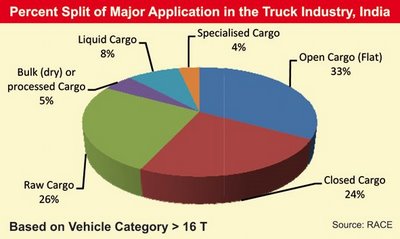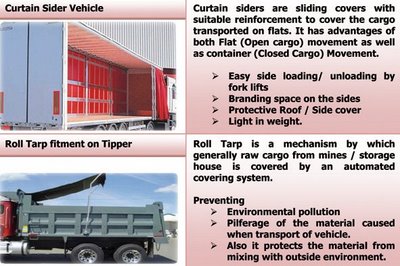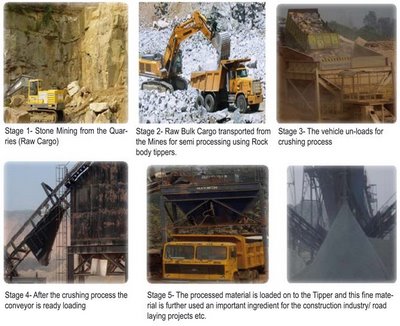 RACE has classified truck applications as:
RACE has classified truck applications as:
* Flat or open cargo truck body designed with open top, flat or with side boards fixed or collapsible.
* Closed or covered cargo including standard ISO containers/refrigerated containers. Truck body designed with all sides closed can be an ISO container or built on chassis or made to different sizes.
* Raw cargo from mines or semi-processed cargo-superstructure designed to carry and dump raw materials from mines and storage houses.
* Bulk (dry) or processed cargo – superstructure designed to carry powdered or granular in structure (other than raw bulk) from manufacturing unit to distribution centre and vice versa
* Liquid cargo-Superstructure designed to carry any cargo in liquid / gaseous form such as milk, water, fuel, gas, oil, etc.
* Specialised cargo like over dimensional cargo- Superstructure designed to carry any oversized cargo, rigs or any other special requirement This classification would facilitate development of customized products, organise and regulate the movement for better safety and economics.
This classification would facilitate development of customized products, organise and regulate the movement for better safety and economics.
The chart below highlights the percentage split of major applications:
With growing awareness on environmental needs, pollution, pilferage and also the expected government initiatives and enforcement for movement of cargo in closed condition, the share of open cargo will get distributed to closed or containerized cargo by approximately 10 per cent. Bulk or processed cargo will increase by another 10 per cent progressively over the next five years.
The light weight collapsible canopies, curtain sider and roll tarp covers will also be seen to be the most attractive products in the market in the days ahead.
The raw cargo movement in India has become more attractive with clear direction from the government in terms of budget allocation and focus on infrastructure building and mining. By definition of raw cargo is mostly raw materials from mines which are transported to storage houses or processing centers to become processed cargo. There are various forms of superstructure designed and built on trucks to carry and dump raw materials from mines and storage houses.
There are various forms of superstructure designed and built on trucks to carry and dump raw materials from mines and storage houses.
The pictures below highlight the raw cargo application in the construction industry:
The RACE research team has been able to capture the shift pattern of the vehicle GVW category of the vehicle used in the raw cargo sector. There is clear shift in the tonnage of vehicles.
Further we can broadly classify the materials transported in raw cargo application as light (density of material between 0.8 to 1.2 kg/cum), medium duty (1.2 to 1.8 kg/cum), and heavy duty (1.8 and above).
The RACE design and product research team has been working with international bench markings to come up with specifically designed products to suit materials in the above category.
The percentage split between the light, medium and heavy is as follows:
The team is also in the process of understanding and looking at the feasibility of usage of different types of material (hi-tensile / hard steel / domex / Hardox / other alloys) for superstructure construction in order to have tare weight and reduction and also improve the life span of the product.
These specifically designed product categories will help OEMs in mapping their customer requirements exactly and offering the customers a more reliable, durable, cost-effective product which, in turn, results in superior performance and profitability to them.  For details, contact: rajesh@westernautorace.com / dushyant@westernautorace.com
For details, contact: rajesh@westernautorace.com / dushyant@westernautorace.com